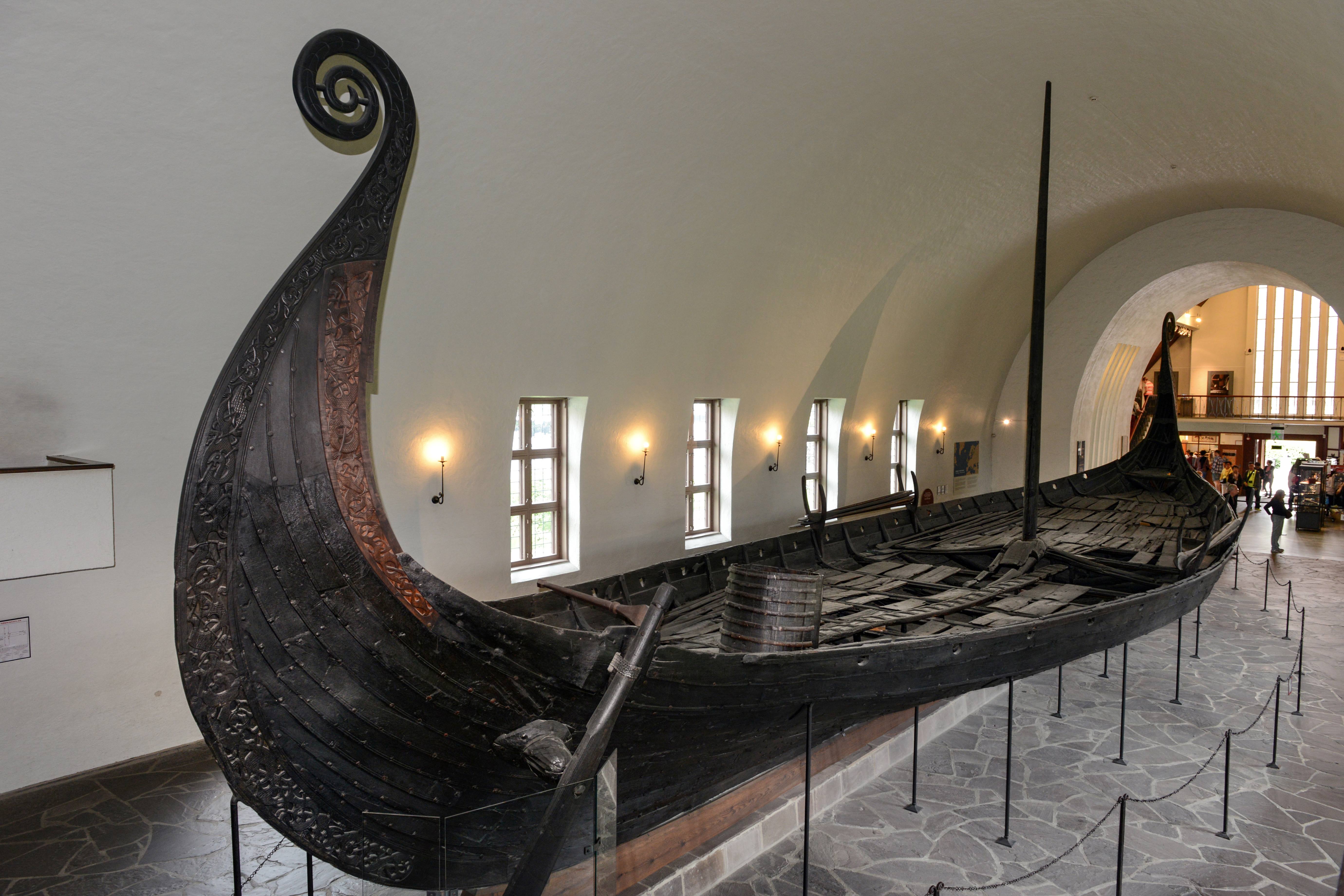New research argues that 64 Viking shields, previously assumed to be ceremonial in nature, were actually used in battle. A reanalysis of the iconic wooden round shields suggests they may have been covered in rawhide and used in combat.
In 1879, two farmer’s sons decided to dig up a large burial mound located on the Gokstad Farm, near Sandefjord in eastern Norway. The mound, known locally as the King’s mound, was thought to contain treasure, so the two brothers wanted to see what they could find. However, rumors of the dig caught the attention of Nicolay Nicolaysen at the University of Oslo’s Collection of National Antiquities, who contacted the sons and arranged to carry out the excavation himself. Then, a year later, Nicolaysen did find treasure, albeit one of historical significance.
The mound turned out to house a monumental and remarkably well-preserved Viking longship that has become an iconic source of archaeological information about the Viking Age.
The ship, which was built around 890 CE, had been used at sea for trade, transport, and combat. Then, in 900 CE, it was dragged inland where it was buried with a wealthy and powerful man. Among the various materials and objects found on the ship, were 64 wooden round shields that had been painted yellow and black. These shields are among the best-preserved specimens in the archaeological record and are “unparalleled in quantity” for artifacts found in a single location.

The famous Viking longboat found at Gokstad, Norway, has become an iconic source of historical and archaeological information about the Viking Age. Image Credit: LHismanto/Shutterstock.com
“As such, these artefacts have significantly contributed to our understanding of the construction of Viking Age round shields,” Rolf Fabricius Warming, the study’s author and a doctoral student of archaeology at Stockholm University, explains in the paper.
“It is no exaggeration to say that the finds have almost single-handedly shaped our understanding of Viking Age round shields as a consequence of their degree of preservation as well as the early excavation and publication by Norwegian archaeologist Nicolay Nicolaysen in the late 19th century.”
According to Nicolaysen’s original book, Langskibet fra Gokstad ved Sandefjord, published in 1882, 32 of the shields were likely tied along the top edge of the ship’s hull, above the oar holes, and may have belonged to some of the original crew on board the vessel (there are 16 ore-holes on either side of the ship).
The shields consisted of wooden planks set around an iron boss on one side and a handle on the other. Unfortunately, despite their well-preserved state, the shields have not remained complete, so we only have their fragments to work with.
Previously, archaeologists believed the shields had only been used for ceremonial purposes, but Warming’s reanalysis suggests otherwise.
“An overarching challenge in this question is the disadvantage of not being able to examine a complete example,” Warming writes. “Instead, without further investigations that can piece together the artefacts with confidence, any answer to this question must necessarily rely on an examination of disconnected fragments and their features.”
Warming found evidence that the shields were originally covered in an organic layer which was probably rawhide (untanned cattle skin). This tough layer would have helped protect and reinforce the shield’s planks and rim, which suggests they may have been used for practical purposes – e.g. combat – rather than just for ritual display.
Although there is no direct evidence to suggest that the shields saw battle, the findings nevertheless challenge long-held assumptions about the nature and design of these artifacts.
The Vikings used ships like the Gokstad vessel in their maritime adventures, which were not just limited to waging war and pillaging coastal settlements. In fact, the Viking culture was far more complex and multifaceted than is often assumed in popular culture and ongoing research continues to add details to their vibrant story. So it makes sense that a thorough analysis of artifacts like the Gokstad shields could well provide more nuanced information in the future.
“Although only a brief and preliminary investigation,” Warming notes, the present research has “brought forth a number of significant considerations and points of departure for future studies.”
“The devil is in the detail and the pagan ship burial at Gokstad has fortunately left us many to examine.”
The study is published in Arms and Armour.
Source Link: "Ceremonial" Viking Shields May Have Actually Been Used for Combat, Study Suggests